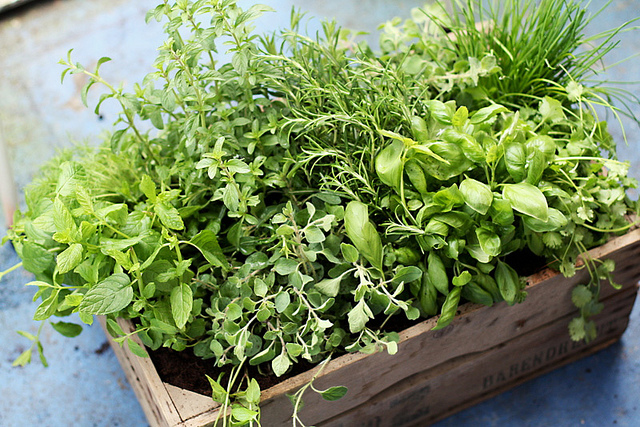Food accounts for about 17% of household emissions in the U.S. [1]. It’s a good place to start if you’re looking to be more sustainable.
1. Go veggie.
Vegetarian diets emit about 3.8 kg of carbon dioxide per day; vegans diets emit just 2.8 [2]. Going vegetarian or vegan is a surefire way to lower your diet’s carbon footprint.
With that said, going vegan, or even vegetarian is a huge lifestyle change. A pescatarian diet (the only meat in the diet is fish) has the same per-day emissions of a vegetarian diet. If you just can’t bring yourself to go veggie, you can always…
2. Skip the Burger.
Meat heavy diets result in 7.2 kg of carbon dioxide emissions per day [2]. That is MORE THAN DOUBLE the emissions of a vegan diet. Beef is the most carbon dioxide intensive meats out there. It results in five times more greenhouse gas emissions than pork or chicken [3].
3. Reduce waste.
We’ve all gone to the super market and bought a big bag of spinach only to have it go uneaten. It gets soggy and gets tossed in the trash. But food waste is one of the world’s largest sources of emissions. Did you know that a full 1/3 of food produced for human consumption is thrown away? The carbon dioxide emissions of food waste ranks behind only the US and China as the worlds top emitter [4].
Here a few strategies for lowering your diet’s carbon footprint by lowering your waste:
- Have a plan before you go to the super market and buy only what you’ll eat.
- If you notice your fridge is starting to fill up make a dish that uses as much of what you have as possible. I like to call these my everything-but-the-kitchen-sink dishes!
- Notice what you are always throwing out. If your always throwing it out, do you really need to buy it? Is there a way for your to better incorporate it into your meals throughout the week?
- Learn how to store your food properly. A quick google search will turn up the best practices for storing tricky things like herbs, lettuce, and celery. Learning this has helped me cut down my food waste drastically.
4. Eat local.
The distance your food travels to get to you can have a bit impact on the carbon emissions associated with what you eat. Nowadays, we can have strawberries during the middle of a Midwestern winter, usually flown in from California or South America. The average meal prepared in the U.S. consists of ingredients originating from 5 different countries [5]! Buying your food locally results in a significant reduction in the carbon emissions attributable to your diet [5].
To start eating local you can try:
- Check out your local farmer’s market. I’ve found that their produce is fresher than the stuff in the super market and it’s often cheaper. Plus, fresher food will last longer.
- Join a CSA. CSA stands for community supported agriculture. In a CSA group, subscribers pay a subscription fee to a local farm in exchange for a weekly box of fresh veggies, greens, and fruit.
5. Go low packaging.
Individually wrapped snack bars and small food packages are very convenient. However, they come at the cost of higher emissions. Products and packaging account for 44% of U.S. greenhouse gas emissions [6].
You can go low packaging by:
- Buying in bulk.
- Switching out packaged snacks for fruits and nuts.
- Get your own water bottle and skip the disposable plastic bottles.
- Try making your favorite packaged products from scratch.
- If you do need to buy a packaged product by the one with the smallest amount of packaging or the most recyclable packaging.



